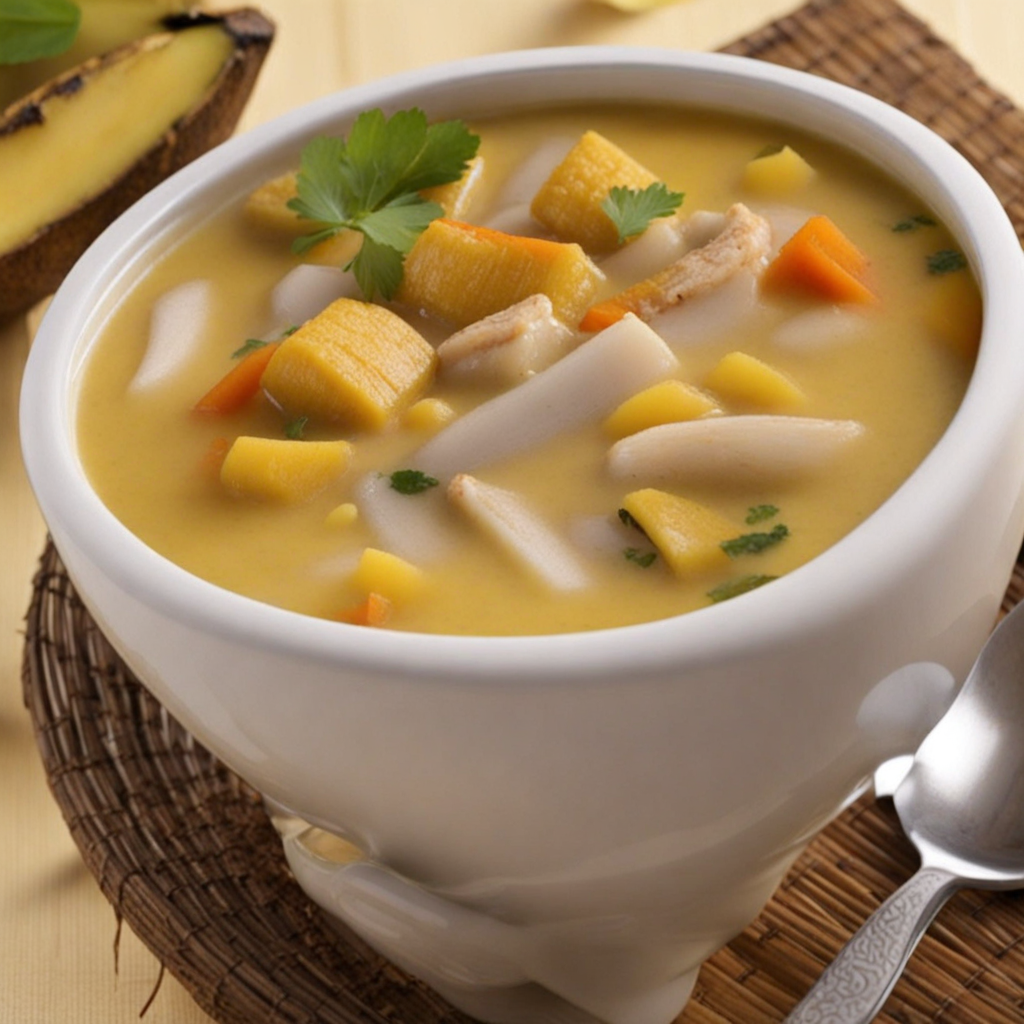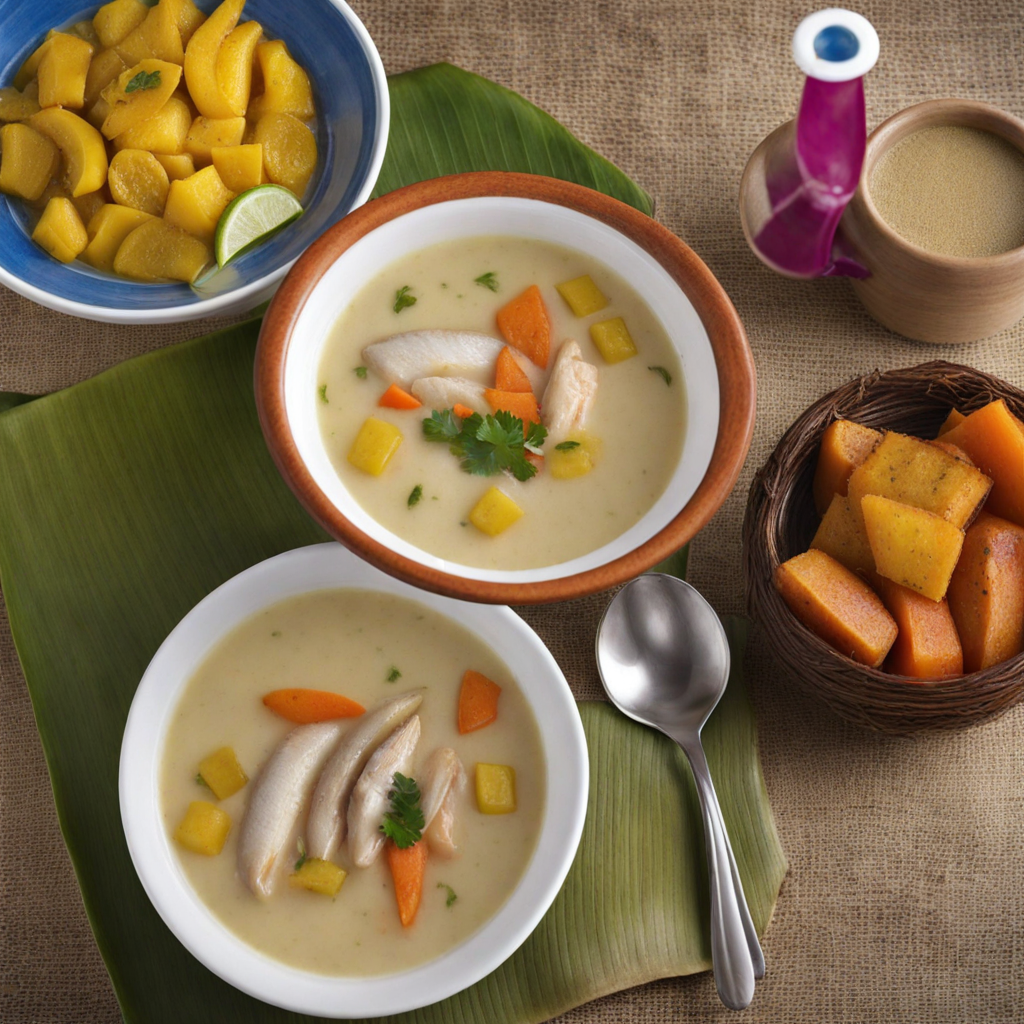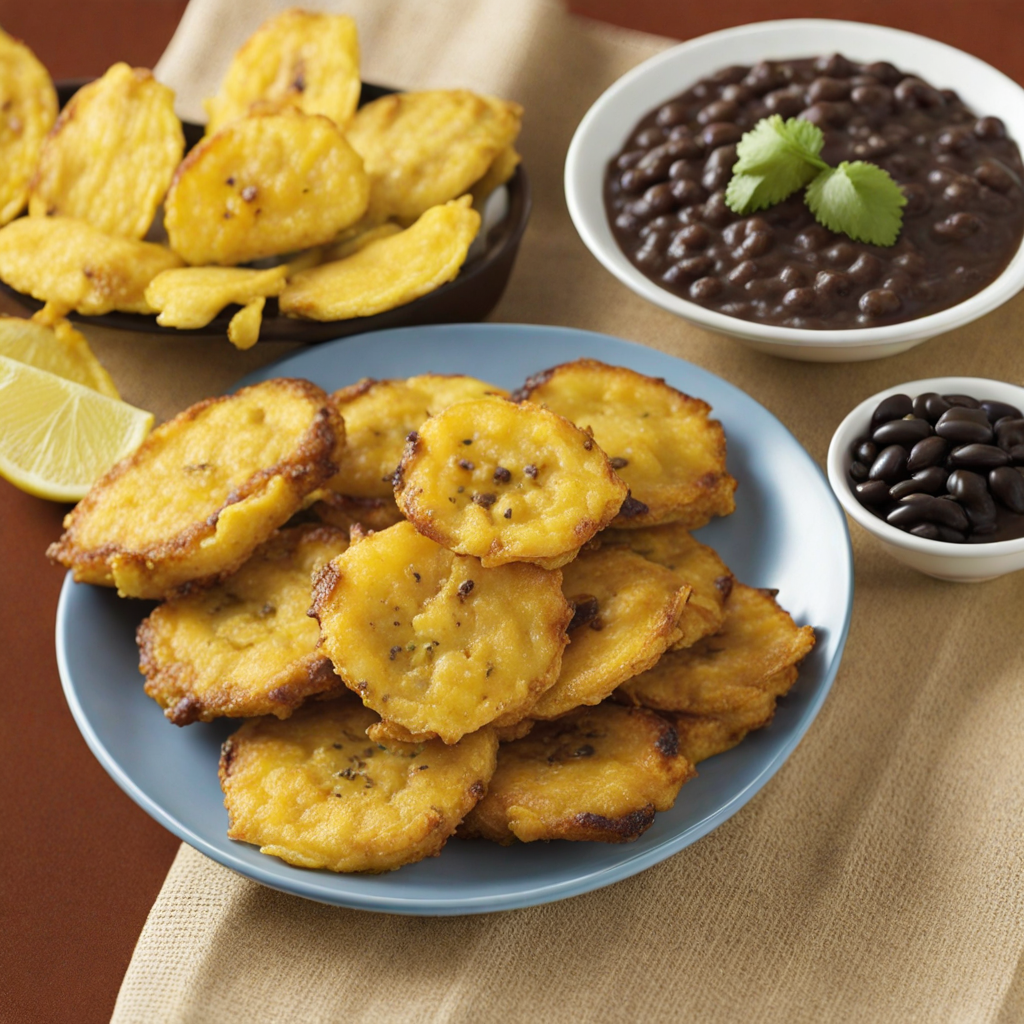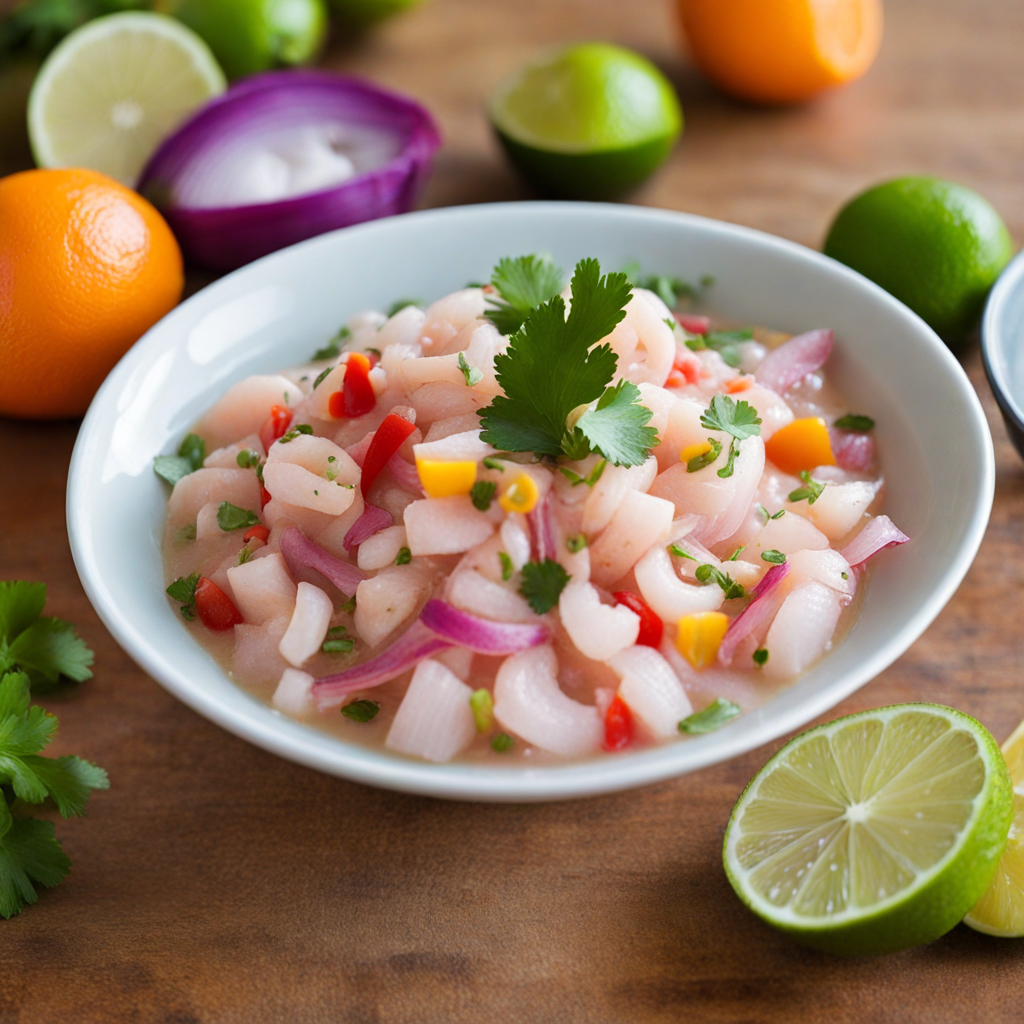Rondon
Rondon is a delightful and hearty dish that hails from the coastal regions of Costa Rica, particularly enjoyed by the Afro-Caribbean communities. This flavorful stew is a perfect representation of the region's culinary heritage, blending fresh seafood with rich, aromatic ingredients. The base of Rondon typically consists of coconut milk, which lends a creamy texture and a subtle sweetness that complements the natural flavors of the seafood, often including fish, shrimp, and sometimes crab. The dish is further elevated with the addition of vegetables such as yucca, plantains, and bell peppers, creating a colorful and vibrant presentation that is as pleasing to the eyes as it is to the palate. What makes Rondon truly special is its unique blend of spices and herbs. The dish is seasoned with a variety of local ingredients, including garlic, ginger, and cilantro, which impart a refreshing zest that contrasts beautifully with the rich coconut milk. Depending on the cook's preference, it can also include a touch of chili peppers for an added kick. Each spoonful offers a harmonious balance of flavors, where the sweetness of the coconut milk marries perfectly with the savory seafood and the brightness of the vegetables, creating a symphony of taste that is both comforting and exhilarating. Beyond its deliciousness, Rondon is often served as a communal dish, embodying the spirit of sharing and togetherness that is central to Costa Rican culture. Traditionally enjoyed with rice or crusty bread, this stew invites you to immerse yourself in the experience, making it an ideal choice for gatherings and celebrations. Tasting Rondon is not just about the food; it's a journey into the heart of Costa Rican coastal life, where every bite tells a story of tradition, community, and the vibrant flavors of the tropics.
How It Became This Dish
The History of Rondón: A Culinary Gem of Costa Rica Rondón is a traditional dish that embodies the rich tapestry of Costa Rican culture, history, and biodiversity. Often enjoyed along the Caribbean coast, this hearty seafood stew is a testament to the harmonious blend of indigenous, African, and Spanish influences that have shaped Costa Rican cuisine over centuries. #### Origins The origins of Rondón can be traced back to the indigenous peoples of the Caribbean region, who utilized the abundant resources of the sea and land to create nourishing meals. The word "Rondón" is believed to derive from the Spanish term "rondón," meaning "to round up" or "gather together," which reflects the dish's nature of bringing together an array of ingredients, particularly different types of fish and shellfish, along with vegetables and spices. The Caribbean coast of Costa Rica, known for its lush jungles and vibrant marine life, provided the ideal setting for the development of Rondón. The indigenous Bribri and Cabécar peoples, who inhabited these regions, relied heavily on fishing and agriculture. They cultivated plantains, yuca (cassava), and a variety of tropical fruits, which would later become staples in the dish. The preparation of Rondón likely began as a way to utilize the day’s catch alongside locally grown produce, fostering a sustainable approach to cooking. #### Cultural Significance Rondón is more than just a meal; it is a cultural symbol for many Costa Ricans, particularly in coastal communities. It is often associated with communal gatherings, celebrations, and family gatherings. The preparation of Rondón can be a social event, where families come together to cook, share stories, and enjoy the fruits of their labor. The dish is also significant in the context of Afro-Caribbean heritage. With the arrival of African slaves in Costa Rica during the colonial period, a rich culinary exchange took place. African flavors and cooking techniques were introduced, which influenced the ingredients and preparation methods of Rondón. The use of coconut milk, for example, is a hallmark of the Afro-Caribbean culinary tradition and has become a defining characteristic of Rondón. In this way, Rondón serves as a culinary bridge between different cultures, showcasing the blend of indigenous, African, and Spanish influences that have shaped Costa Rican society. It is often served during festive occasions and is a popular dish in the region of Limón, where Afro-Caribbean culture is especially prominent. #### Development Over Time As Rondón evolved, its ingredients and preparation methods adapted to reflect the changing landscape of Costa Rican society. In the early 20th century, as more Costa Ricans began to migrate towards urban areas, the accessibility and availability of ingredients influenced the dish. Although traditional recipes remain prevalent, modern interpretations have emerged, incorporating locally sourced ingredients and contemporary culinary techniques. The traditional seafood used in Rondón varies depending on what is available. Common ingredients include conch, shrimp, crab, and various types of fish, all simmered in a rich broth made from coconut milk, spices, and herbs. The use of root vegetables like yuca, taro, and plantains adds a hearty texture and depth to the dish. In recent years, Rondón has also gained recognition beyond Costa Rica’s borders. As global cuisine continues to embrace diverse culinary traditions, Rondón has found its way onto menus in international restaurants, often celebrated for its robust flavors and cultural significance. Food festivals celebrating Costa Rican cuisine also feature Rondón prominently, allowing chefs and home cooks alike to showcase their variations of the dish. #### Modern Interpretations and Sustainability Today, Rondón is not only a comfort food but also a symbol of sustainability in culinary practices. As ocean conservation becomes a significant concern, many chefs are now focusing on sourcing sustainable seafood for their Rondón. This shift aligns with a broader movement towards eco-friendly culinary practices and highlights the importance of protecting marine ecosystems for future generations. Moreover, the resurgence of interest in traditional cooking methods and local ingredients has led to a revival of Rondón in various forms. Modern chefs experiment with the dish by adding innovative twists, such as incorporating non-traditional proteins or enhancing the broth with unique spices. Nevertheless, the essence of Rondón remains rooted in its historical and cultural significance. #### Conclusion Rondón is more than just a dish; it is a reflection of Costa Rica’s rich cultural heritage and biodiversity. Its origins, deeply intertwined with the indigenous peoples, African heritage, and Spanish influences, tell a story of resilience, adaptation, and community. As Rondón continues to evolve, it remains a cherished dish that brings people together, celebrating the diverse flavors and traditions of Costa Rica. Whether enjoyed at a family gathering, a festive occasion, or a local restaurant, Rondón serves as a delicious reminder of the past and a hopeful glimpse into the future of Costa Rican cuisine. In a world that often overlooks the importance of traditional foods, Rondón stands as a vibrant symbol of cultural identity, sustainability, and the enduring power of community and shared meals.
You may like
Discover local flavors from Costa Rica







